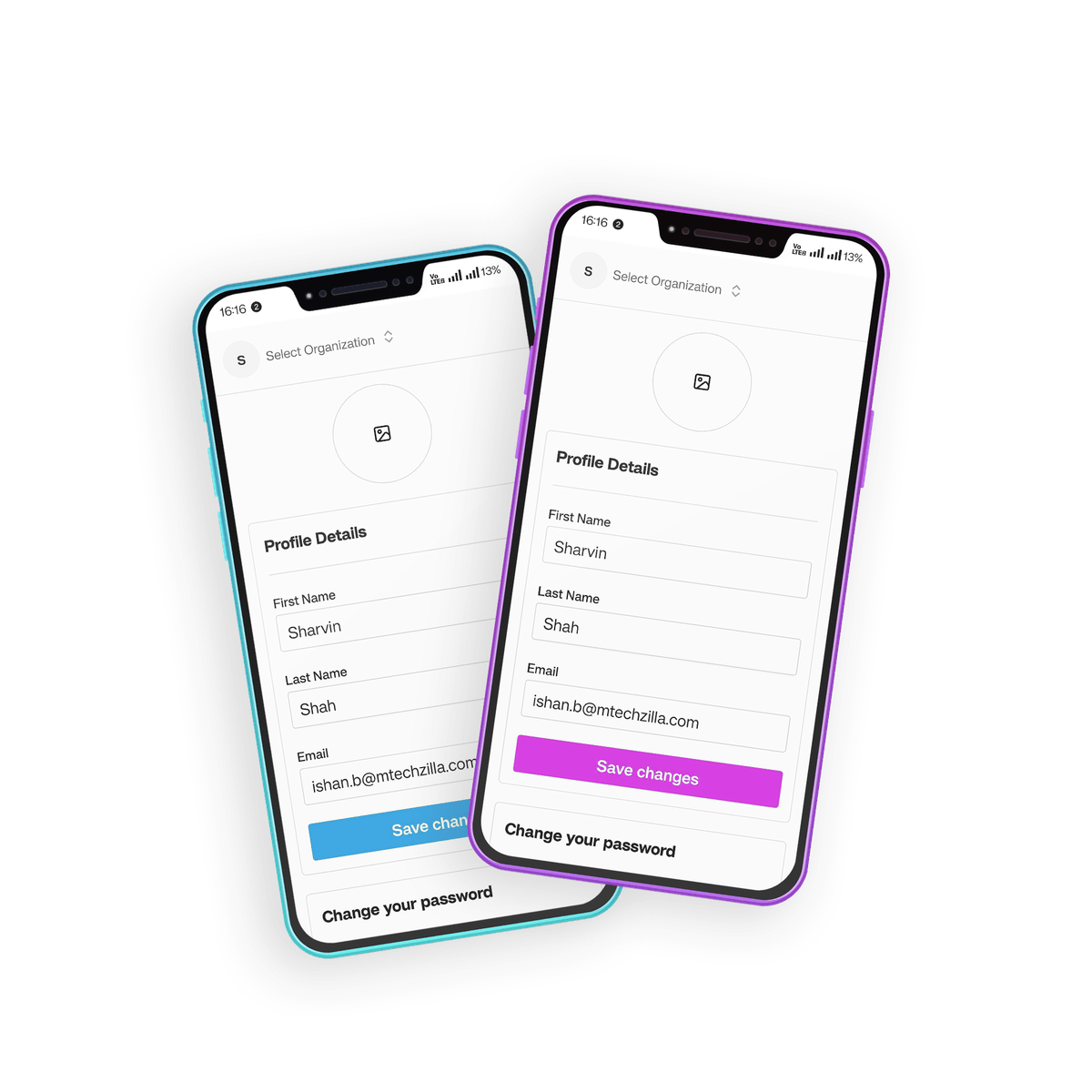Tuesday, 18 Feb 2025
7 min read
Qwik vs Next.js: Which Framework is Best for Your Project in 2025?

Choosing the right frontend framework is crucial for building high performance applications. Qwik and Next.js are certainly the two most important frameworks popular in the time, and each of them offers unique notions as well as optimizations for the typical project need. Qwik is recognized for loading speed with its speed inducing "Resumability," thus suited for use on Heavy performance websites, while Next.js is simply the flexible React based framework, powered with brilliant tools like server-side rendering and static site generation, which makes it perfectly dynamic and scalable applications. But with both of them having advantages, which one will suit your next project better?
In this blog, we will explore the key differences, strengths, and weaknesses of Qwik and Next.js, providing a comprehensive comparison that will help you make an informed decision on which framework is best for your specific needs in 2025. Understanding the core differences will help maintain a path to informed decisions as far as the construction of anything upon the best foundation goes. Be it a simple landing page or very complex web applications, this guides you toward the framework that fits your requirements, precisely in 2025.
Table of Contents:
- Introduction
- What is Qwik?
- What is Next.js?
- Performance Comparison: Qwik vs Next.js
- Developer Experience: Which Framework is Easier to Use?
- SEO and Routing: Which Framework Handles It Better?
- Use Cases and Suitability: Which One Fits Your Project?
- Community Support and Ecosystem
- Pricing and Costs
- Qwik vs Next.js: The Final Verdict
- Conclusion
- Frequently Asked Questions (FAQs)
What is Qwik?
Qwik is a cutting edge framework designed to optimize performance and user experience from the very beginning. It is intended primarily for performance approaching the almost instant load of pages. However, in their instant on pages, Qwik puts a whole new spin on what the traditional frameworks have termed "Resumability". Resumability means that, unlike the traditional system, which loads all code upfront, Qwik only downloads the code that is really required when the user interacts with the page.
Key Features of Qwik:
- Resumability: the strongest point of Qwik, could load a page instantly simply by sending very little JavaScript to the client, then just resumed to where it left the execution.
- Hydration Free JavaScript: Most frameworks must go through a hydration phase to make a page interactive. Qwik excludes that due to being "hydration free."
- Server-Side Rendering (SSR): Qwik is SSR enabled and can pre-render pages for faster delivery.
- Optimised Code Splitting: Qwik does dynamic code splitting into smaller chunks loading only the required code for the user.
- SEO: Fast page loads and pre-rendered content make Qwik optimal for SEO performance, which improves search engine rankings and encourages user engagement.
What is Next.js?
Next.js is a widely used React framework that brings a comprehensive suite of tools for building server-rendered React applications. Upon release, it became popular massively due to the fact that it is highly scalable, highly versatile and extremely rich in features. By bringing in certain built in tools for routing, API creation, image optimisation, and static site generation (SSG), it has surely simplified and sped up React development.
Key Features of Next.js:
- Server-Side Rendering (SSR): Automatically handling server pre-rendering of pages thus improving performance and SEO.
- Static Site Generation (SSG): Creating static HTML at build time with SSG gives fast loading pages and good SEO.
- Incremental Static Regeneration: Updating static content after the build while avoiding entire site rebuilding is possible through Incremental Static Regeneration.
- API Routes: API routes make it easy to add backend functionality right into the same project, so full stack development becomes much easier.
- Optimised Images: Built in optimisation features take care of resizing images to the user's device for faster loading.
Performance Comparison: Qwik vs Next.js
In performance, both Qwik and Next.js can be considered top-tier, albeit with their optimisations executed differently.

Developer Experience: Which Framework is Easier to Use?

SEO and Routing: Which Framework Handles It Better?
Both Qwik and Next.js have very significant Christ's interests because they fundamentally are different in thinking from the routing and rendering perspective.
- Qwik’s SEO optimisation: Through architecture, Qwik was invented to optimize towards superb SEO. It pre-renders content pages making them load very fast and easily discoverable by search engines. Its unique hydration free rendering boosts SEO by very fast delivering full-rendered pages. It has made the most effective user experience by improving search engine rankings through limited loading times.
- Next.js SEO Capabilities: Next.js serves as beautiful SEO because of its features of SSR (Server-Side Rendering) and SSG (Static Site Generation). Pre-rendered things with links to fast load speed are offered by Next.js as it allows dynamic routing. This makes it possible for developers to build complex routing organizations easily, to optimize content organization and improve SEO. Next.js thus tends to build scalable and better SEO compliant web applications.
Use Cases and Suitability: Which One Fits Your Project?
The basic distinction between Qwik and Next.js happens to be for what kind of product you want to use it.
- Qwik Projects Performance Oriented: It is great for performance critical projects, such as eCommerce websites, landing pages, and applications that throw a lot of content at a user. Qwik can provide instant page loads with essentially zero resources and is ideal for large scale applications expecting quick, highly performant interactions and excellent search engine optimization. If your primary need is to get better speed while keeping a very smooth user experience, you should consider Qwik.
- Next.js Versatility and Dynamic Features: Next.js is the most mature and versatile framework that supports almost every application like blogs, portfolios, eCommerce sites, and enterprise level solutions. With its integration with React and the massive community behind it, developing dynamic features and applications that can scale is the simplest approach. Next.js is an excellent solution if you are looking for flexibility, great routing, and a wide range of built-in functionalities. Be it a small project or a large enterprise application; it will definitely help you.
Community Support and Ecosystem
Know the community and ecosystem differences between Next.js and Qwik regarding frontend development.
- Next.js Community and Ecosystem: Newly emerging area, with a large and very active community, the Next.js framework offers lots of rich resources such as third-party plugins and tools. This makes it easier and faster to develop while providing high quality constructs. All the trust and popularity of New starts to make it really quite a safe option for you.
- Qwik Community and Ecosystem: Qwik is still shaping its community and ecosystem; it is new. Smaller than Next.js, but faster growing, a developer community is already beginning to pay serious attention to the performance oriented features of Qwik. As other developers explore the wonders within this ecosystem, it keeps growing; this makes it a promising site for the latest developments webwise.
Pricing and Costs
Both Qwik and Next.js are open source frameworks and don't impose exorbitant licensing fees on you. But depending on the complexity and scale of your project, hosting and infrastructure costs can scale up. For example, Next.js can be deployed in serverless mode, which is great for smaller projects in terms of affordability, but often proves to be costly in no time when your traffic starts growing. Next.js has the flexibility to choose from different hosting solutions, thus letting you optimize your balance of trade offs between cost and performance.
On the flip side, Qwik emphasises providing ultrafast performances which, in turn, could enhance your savings on hosting by cutting down on resource usage. The most distinguishing feature of this framework is that it loads your app only for the stuff that is necessary while optimizing the load time and server resource utilization. However, being a relatively new framework, you might need to invest heavily in custom infrastructure or specialized hosting solutions to the extent where you have enough power to reap the benefits that come with good performance.
Qwik vs Next.js: The Final Verdict

Conclusion
In 2025, the success of your web project may depend on choosing the suitable framework. Both Qwik and Next.js have their strong suit and features. We can say that Qwik has a slight edge regarding performance based websites, whereas Next.js is good in terms of flexibility for different applications.
For building scalable SAAS products, useSAASkit is a great tool to immediately launch projects using the Next.js framework for perfect performance and experience.

Frequently Asked Questions (FAQs)
Which framework is more SEO compatible: Qwik or Next.js?
While both frameworks have terrific SEO capabilities, Qwik's remarkable performance in on the fly loading and non hydration rendering takes the cake.
Is learning Qwik more difficult than learning Next.js?
Qwik has a higher learning curve because of its newer concepts, but it presents powerful performance advantages for developers willing to invest the time.
Which is more scalable between Qwik and Next.js?
Scalability favors Next.js with its larger ecosystem and widespread use; however, Qwik shines in performance scalability applied to content heavy apps.
Can I use React in Qwik?
No, Qwik is a proprietary framework and does not leverage React. Its component model is optimized for performance on its own.
Which framework is more suitable for an eCommerce site?
Qwik's performance optimizations make it the better solution for eCommerce sites with stringent requirements for fast loading time. Next.js is also a good option, but some additional efforts may be required for very large, dynamic applications.



